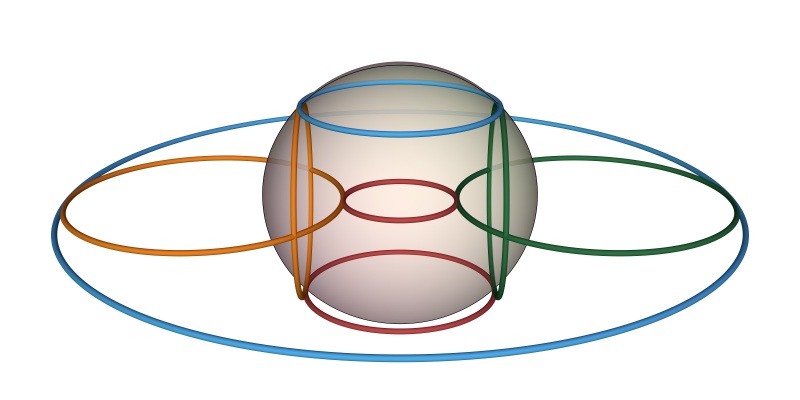Imagine eight points, nicely spaced and colored, on a circle. Project them stereographically onto a line, keeping their color. In the image below, the projection center is at the top of the circle. You expect to get eight points on the line. One of them is hiding off the screen in the figure below.

Now let’s move the points counterclockwise, with constant speed, around the circle. Their stereographic images will slide along the line. To visualize that motion, we trace the position by using the x-coordiante for the position and the y-coordinate as time. This way we get the colored curves above, each representing two full turns of the point around the circle.
A simple rotation of an 8-gon has become quite tricky. It will get worse. Let’s place two circles (blue and red) onto a sphere, by taking the 45 degree latitudes. When we stereographically project these into the plane, we get two concentric circles. Now rotate the sphere about the y-axis. After 90 degrees, the two circles have become vertical (yellow and green), and their stereographic images are two disjoint circles. How did that happen?

Let’s visualize the process the same way as before, by tracing the position of the circles using the z-coordinate for the angle of rotation.

We obtain two interlocking identical surfaces, both of which have circular horizontal slices. This is reminiscent of Riemann’s minimal surface, but it is not the same surface. Riemann’s surface is several magnitudes more complicated. After all, we are only rotating a sphere.
We can make this a bit more complicated by simultaneously rotating the sphere about the z axis. In other words, we rotate the image circles about the z-axis depending on their height.

Finally, here is the same construction with three circles. This gets quite crowded.
